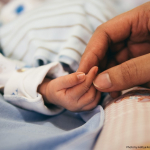You can find a more recent post on this topic here:
Venlafaxine and Duloxetine: Pooled Analysis Shows No Increase in Risk of Malformations
We receive a fair number of questions on the use of duloxetine during pregnancy. Duloxetine (sold in the United Sates under the brand name of Cymbalta) is a serotonin-norepinephrine reuptake inhibitor (SNRI) effective for major depressive disorder and generalized anxiety disorder (GAD). It has also been FDA-approved for the treatment of chronic musculoskeletal pain and fibromyalgia. Although it is used fairly commonly in women of child-bearing age, information regarding its reproductive safety is limited. For those of you interested, there is a thorough review on the use of duloxetine during pregnancy in the December 2014 issue of the Journal of Clinical Psychiatry. I will summarize here the points made in this review.
In a prospective observational study, Einarson and colleagues followed 208 women who contacted Motherisk regarding the reproductive safety of duloxetine. Of these, 206 women (99.0%) took duloxetine before conception and during the first trimester. In the duloxetine group, there were 3 (1.8%) major malformations (clubfoot, hydronephrosis, kidney agenesis). The rates of malformation in this group did not differ from two comparison groups: (1) women who were inquiring about exposure to other antidepressants (n=208) and (2) women inquiring about an exposure to medications not considered to be teratogens, such as acetaminophen (n=208).
In another report, Hoog and colleagues reported on 400 cases of duloxetine exposure identified through the Eli Lilly Safety System database. There were 233 prospectively recorded cases. In this group, there were six congenital malformations (3%). This report did not include a control group; however, the rate of malformations in the exposed group is similar to that expected rate in the general population. (This study did not specify what malformations were observed.)
If we combine these two studies, we have prospectively collected data on a total of 439 pregnancies, with a total of 9 malformations; a rough and dirty calculation would give you a malformation rate of 2.1% which is comparable to the rate we see in the general population. While this information is reassuring, Einarson and colleagues note that approximately 750 subjects in each group would be required to detect a 2-fold increase in major malformations, and thousands would be required to detect an increase in the risk of rarer anomalies. These results suggest that duloxetine does not appear to increase the rate of major malformations above baseline.
Several studies suggest that duloxetine, as seen with other antidepressants, may increase the risk of spontaneous abortion. In the report from Hoog, the risk of spontaneous abortion was about 18% among women taking duloxetine. Reassuringly, the risk of pregnancy loss in women taking Cymbalta is not increased significantly over the 12%-15% risk of miscarriage seen in the general population. This is a complicated issue: it appears that having depression itself may impact the risk of miscarriage and more recent analyses have not documented an association between antidepressant exposure and spontaneous abortion.
There is not adequate data to comment on the risk of other outcomes such as preterm delivery, low birth weight, poor neonatal adaptation, and persistent pulmonary hypertension of the newborn.
Would We Recommend Using Duloxetine?
There is no single or simple answer to this question, and we must make all decisions on a case-by-case basis. Let’s consider a woman taking duloxetine for major depression who is planning pregnancy within the next year. If she has not tried other, better characterized, antidepressants, we might try switching her over to one of these older antidepressants prior to conception. On the other hand, there is a growing body of data to support the reproductive safety of duloxetine. In a woman who has not responded well to other antidepressants or who is unwilling to accept the risk of relapse of her illness in the setting of a medication switch, we might elect to maintain duloxetine throughout the pregnancy.
Ruta Nonacs, MD PhD
Andrade C. The safety of duloxetine during pregnancy and lactation. J Clin Psychiatry. 2014 Dec;75(12):e1423-7.
Einarson A, Smart K, Vial T, et al. Rates of Major Malformations in Infants Following Exposure to Duloxetine During Pregnancy: A Preliminary Report. J Clin Psychiatry 2012;73(11):1471.
Hoog SL, Cheng Y, Elpers J, et al. Duloxetine and pregnancy outcomes: safety surveillance findings. Int J Med Sci. 2013; 10(4):413–419.








extremely helpful and encouraging report. Thank you!
My daughter is pregnant and has terrible pain due to PGP.
I’ve been taking Cymbalta for years and it has relieved my lower back pain (scoliosis) tremendously.
Has Cymbalta ever been administered for PGP?
Thanks so much!
Becky
Great question. I don’t believe that Cymbalta has been used for pelvic girdle pain.
Are there any updates to this informatiin?
Are there any updates available as to the safety of cymbalta during breastfeeding?